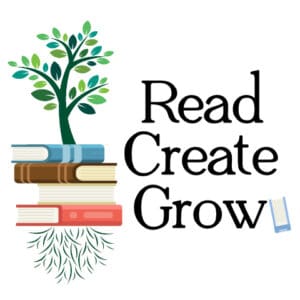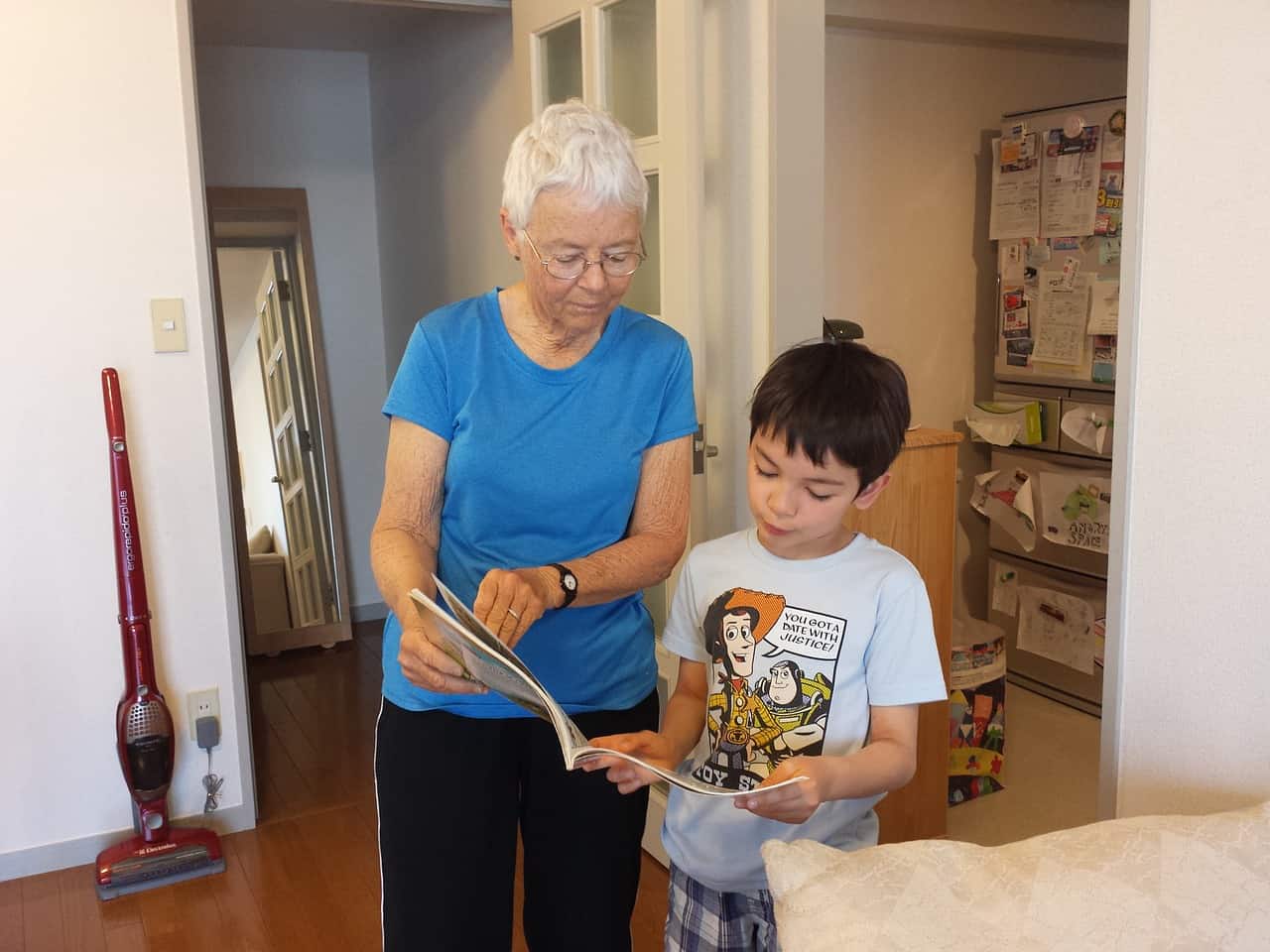It may seem counterintuitive that a wordless picture book is read a certain way, it’s wordless after all, right? What is there to read? In this post we are going to look at why wordless picture books should be part of your child’s reading routine, and three easy steps on how to read this kind of book.
*This post may contain Amazon or other affiliate links. As an Amazon Associate I earn from qualifying purchases.
Why are wordless (or minimally worded) picture books important?
It may surprise you that books that do not feature any, or many, words can actually help boost your child’s oral language development. Telling stories is an innate part of being a child and even being human. We connect to each other and the world through stories, so learning to tell them is a critical part of our development as humans.
Learning to tell stories expands vocabulary by teaching children new words and applying them in a way that will make sense, it builds narrative skills by teaching that stories have a beginning, middle and end and it strengthens listening skills and comprehension by channeling the learning into listening and processing what is being said, all of which can be practiced with wordless picture books.
Practice reading wordless picture books by starting with background knowledge about the book, asking questions for context as you go, and emphasizing the tone of any words featured in the story. Take a deeper look at why building narrative skills is one of the most important skills for your child’s development, and ways to work on that skill at home in this post.
Three Steps to Reading a Wordless/Minimally Worded Picture Book
Step 1: Start with Background knowledge
Start with this question before you read any book, but especially before reading a wordless picture book: What do you see on the cover of this book? Children are always gathering knowledge from their environment. Use the “environment” of the story, the book itself, to start gathering knowledge about the book.
Don’t worry about the old “Don’t judge a book by it’s cover” adage, we aren’t judging here. Simply gathering information. Ask what your child sees and what they think the story might be about. How was the illustration on the cover done? Was it drawn, collaged, watercolored, photographed or something else? What do they think this might mean about the pictures inside? Might they be done the same way?
Talk about the words on the cover of the book. There may not be many, or any, inside, so the ones on the front are super important because that is what the writer wanted you to know about the story. Read the title together, what do the words mean? Is there any new vocabulary that might be important?
You can also take this time to explain what an ‘author’ and ‘illustrator’ are, and repeat the questions, “What does the author do? Writes the story!” “What does an illustrator do? Makes the pictures!” every time you read, until the answer becomes second nature.
Step 2: Ask questions to teach reading for context
Now you haven’t even cracked the book open and you have already had a great discussion about the book by gathering background knowledge that will be important to understanding the story! Now it is time to look for context about the book. Ask the following questions as you “read” the story together:
- Who is the main character? How can you tell?
- How does the main character feel? What do you think this expression means?
- What is the character saying? How do you know?
- What is happening around the character?
- What do you think will happen next?
Step 3: Using Tone for Context Clues
A minimally worded picture book will be a story with only one word of text repeated throughout, or possibly just one short phrase. Like wordless books, these stories rely on you and your child to read in the plot. The variation will be that they also rely on tone and inflection in the single provided word or phrase. This adds a level of complexity to the understanding because in addition to narrative skills, it will also be teaching your child oral language skills.
Question marks must be extra-emphasized to make it very clear that it is a question, and exclamations must be extra-emphatic. Apply everything above about reading a wordless picture book, and add the following questions as well:
- Ask your child what they think that tone means, explain that the way a word is said can tell you what it means (ie: if your voice goes up at the end then you are asking a question)
- Have your child repeat it with intonation and ask how their bodies feel when they say it in that tone
It’s your turn! Try out your new skills with these wordless/minimally worded picture books.
*This post may contain Amazon or other affiliate links. As an Amazon Associate I earn from qualifying purchases.
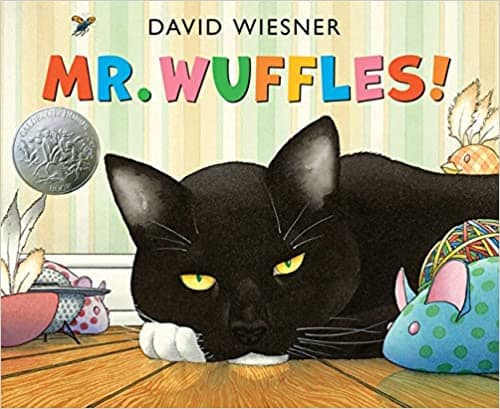
Mr. Wuffles
Written and illustrated by David Wiesner
Best for Ages 5-8
A 2014 Caldecott Honor book about Mr. Wuffles, a cat who really wants to play with the spaceship of aliens in his home. But the aliens are not enjoying his rough housing, teaming up with the home insects to repair their space ship and hide from the cat. Minimally worded, this book leaves room to grow as slightly older readers will enjoy “decoding” the pictographic messages between the aliens and the insects.
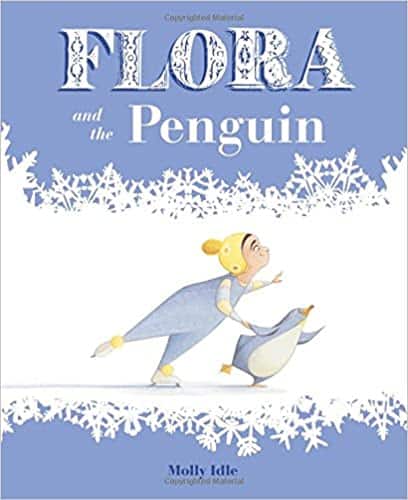
Flora and the Penguin (Feathered Friends Series)
Illustrated by Molly Idle
Perfect for Preschool-Kindergarten
Flora has many feathered friends, first she masters ballet in Flora and the Flamingo, then she tackles the ice in Flora and the Penguin. A story about learning new things, making friends and overcoming challenges, all told without a word of text. These will be good for questions about feelings and what might happen next.
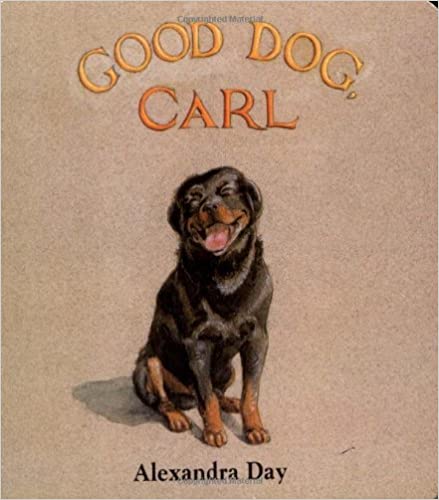
Good Dog Carl
Illustrated by Alexandra Day
Funny for Ages 1-4
The first of many adventures in the series, Carl the Rottweiler babysits his young charge as she runs amuck through the house, leaving chaos in her wake. He saves the day and manages to set everything right again before her mother comes home. With only a single line of text at the beginning, this book is a fun choice for predicting what might happen next and examining the pages for background information.
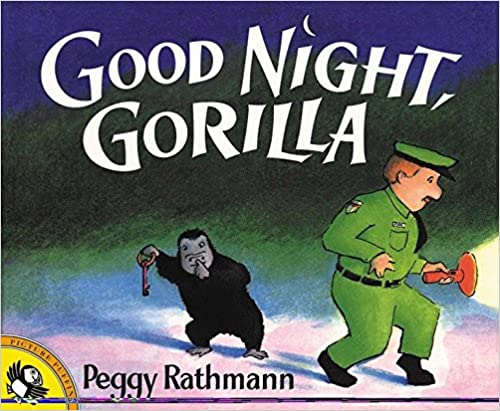
Good Night, Gorilla
Written and illustrated by Peggy Rathmann
Best for Ages 1-3
Featuring minimal and repetitive text, this is a book you can sink your teeth into practicing prediction and context clues to think about what might happen next. There are animal shenanigans happening on every page, so go slowly and look at all the things the animals are getting up to as you read.

Lion and the Mouse
Written and Illustrated by Jerry Pinkney
Satisfying for Ages 1-8
A 2010 Caldecott winner, beautifully illustrated and minimally worded retelling of Aesop’s fable, this story has something for a wide range of ages. The featured words are mostly animal sounds that add dimension to the story. The characters’ faces are almost humanly expressive and just right for asking how a character is feeling, there is enough excitement to keep it intriguing but with a satisfying resolution that won’t disrupt bedtime.

Wave
Illustrated by Suzy Lee
Perfect for Preschool and Kindergarten
A completely wordless story about a young girl’s day on the beach is perfect for reminiscing about a trip to the beach, lake, pool or a run through the sprinklers. Make comparisons as you read about how the water moved, the weather, the birds and how it felt. If your child is too young to remember, paint the story for them, they will love to hear it.

Spot the Cat
Illustrated by Henry Cole
Engaging for Ages 4-8
A little boy’s cat named Spot leaves the house and goes on an adventure. Spot winds through the city, parks, museums and markets all while the little boy searches from him, but he is hard to find. The boy returns home and happily so does Spot. Spend time looking at the pages searching for Spot and anything else you might “spot” while you read this completely wordless book. This is a great opportunity to practice predicting what might happen next, talking about the other things you see and thinking about how the boy might be feeling. This book can be enjoyed again and again so it grows with age.
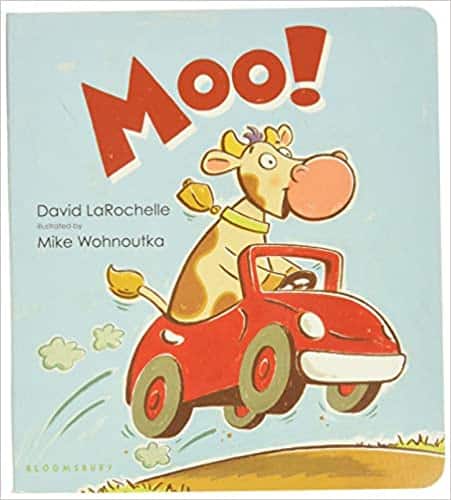
Moo
Written by David LaRochelle | Illustrated by Mike Wohnoutka
Funny for ages 3-6
Cow takes Farmer’s car for a ride through the countryside, bumpity-bumping through the hills. There is a single word used in this story, and the way it is said tells the whole tale. Practice reading this out loud, really focusing on the tone and inflection of the words, the way the word is said each time creates a world of meaning. Ask your child if they can think of the what the cow would say if she had more words to use.
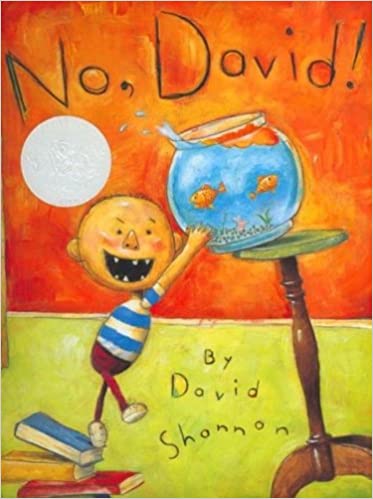
No, David!
Written and Illustrated by David Shannon
Best for Ages 3-5
Kids often find mischievous behavior in books hilarious, perhaps because they can relate? No, David! has simple, repetitive text that can be shared and is fun to read aloud. Practice inflection when you read and predicting what might happen next based on the story context. Be sure to emphasize the love at the end with a snuggle.
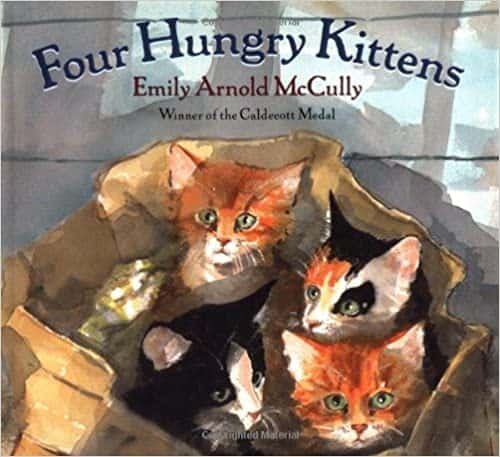
Four Hungry Kittens
Illustrated by Emily Arnold McCully
Best for Ages 3-6
Four kittens hungrily await Mom-Cat’s return with dinner. Drama wordlessly unfolds as Mom-Cat is accidentally trapped in the barn and the kittens are watched over by the farm dog, who saves the day. This story has drama and comedy and resolves with a happy ending of a family reunited. With no words in the story, you can practice thinking about how the characters might be feeling and how you came to that answer.
